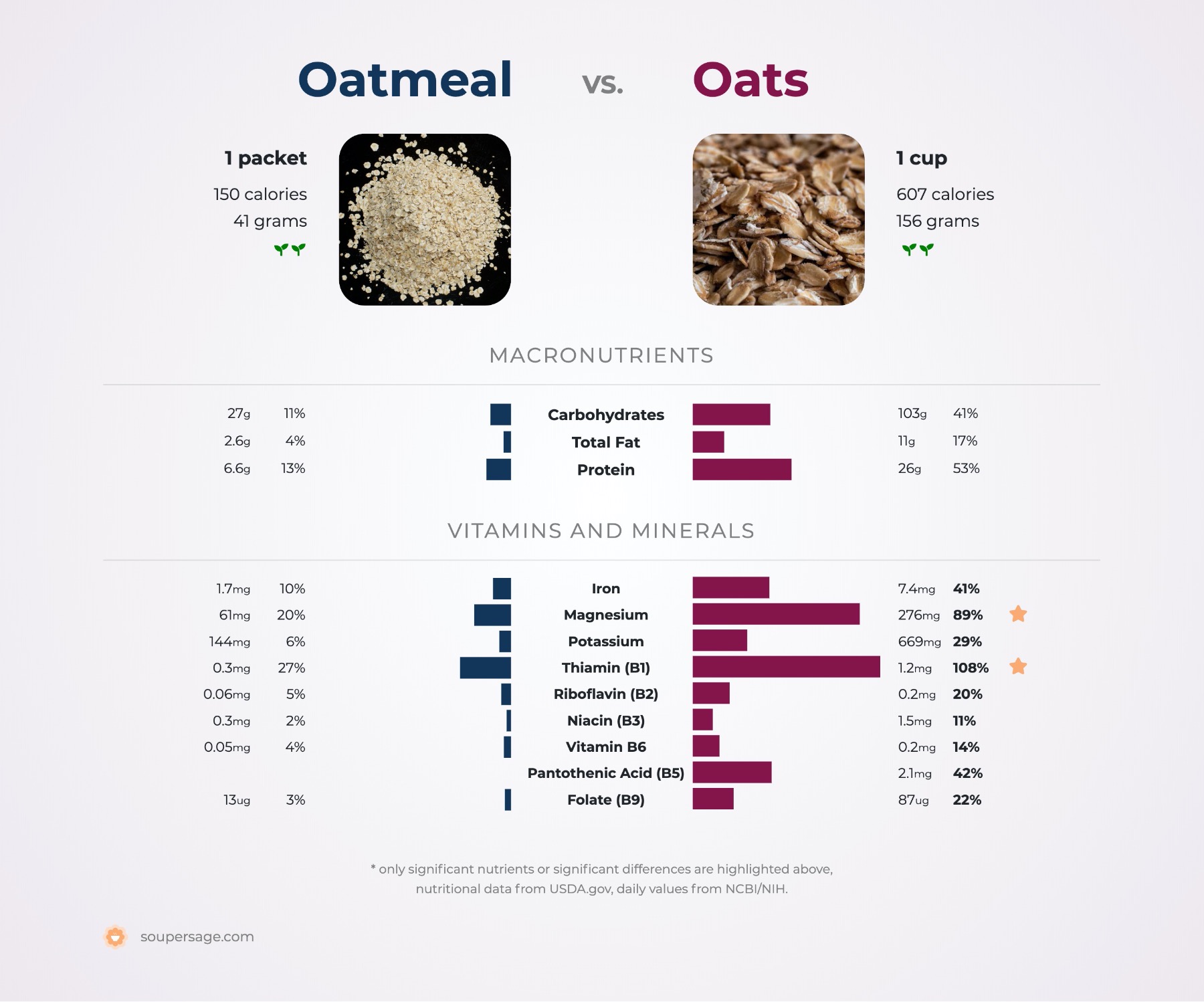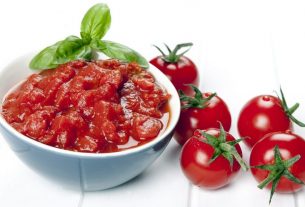Porridge and oatmeal, two humble dishes with rich histories, have captivated people’s palates across the globe.
Imagining a hot bowl of warm grains or starchy plants, cooked to perfection and swimming in a pool of flavorful liquid, instantly evokes feelings of comfort and nourishment.
Whether you prefer a sweet or savory rendition, the possibilities are endless when it comes to toppings and flavors.
Join us as we delve into the world of porridge and oatmeal, unraveling their fascinating tales and uncovering their myriad of benefits.
Get ready to embark on a culinary journey that will leave you craving for more!
porridge vs oatmeal
Porridge and oatmeal are both popular breakfast options that offer a variety of health benefits.
Porridge is a food made by boiling starchy grains in milk or water, while oatmeal specifically refers to porridge made from oats.
Porridge can be cooked using different grains, such as rice, barley, or corn, and can be served as a sweet cereal with added flavors like sugar, honey, or fruit, or as a savory dish with spices, meat, or vegetables.
Oatmeal, on the other hand, is rich in fiber, protein, and low in calories.
It contains oat beta-glucan, which helps lower cholesterol levels and reduce the risk of heart disease.
Oatmeal comes in different forms, including whole oats and rolled flakes, and can be customized with various toppings like fruits, nuts, or jam.
Both porridge and oatmeal offer a nutritious and filling start to the day.
Key Points:
- Porridge and oatmeal are popular breakfast options with health benefits.
- Porridge is made by boiling starchy grains in milk or water and can be sweet or savory.
- Oatmeal specifically refers to porridge made from oats and is rich in fiber, protein, and low in calories.
- Oatmeal contains oat beta-glucan, which helps lower cholesterol and reduce heart disease risk.
- Oatmeal comes in different forms and can be customized with various toppings.
- Both porridge and oatmeal offer a nutritious and filling breakfast.
porridge vs oatmeal – Watch Video
💡
Pro Tips:
1. Despite their similar appearance and usage, porridge and oatmeal actually have slight differences. Traditional porridge, which originated in Europe, is made by boiling various grains or legumes in water or milk until they reach a creamy consistency. On the other hand, oatmeal is a specific type of porridge made only from oats, which are either rolled or steel-cut.
2. The word “porridge” has an interesting etymology that can be traced back to the Latin word “pulmentum,” meaning a type of boiled dish. This Latin term evolved into the Old French word “pottage,” which eventually entered the English language as “porridge.”
3. While oatmeal has had a long history as a breakfast staple, it served another purpose during the medieval period. In addition to being consumed as a food, oatmeal was commonly used as a poultice to treat various skin conditions, including burns and irritations.
4. Porridge has been a popular dish in various cultures around the world for centuries. In Russia, the traditional porridge known as “kasha” is often enjoyed with a touch of butter or smetana (sour cream). Additionally, in some parts of Africa, porridge made from cornmeal is a common staple food, known as “ugali” in East Africa or “pap” in Southern Africa.
5. Oatmeal became particularly popular in Scotland, where it remains an important part of the national cuisine. Scotts use a specific type of oats known as “pinhead oats” or “oat groats,” which are not rolled but instead chopped into small pieces. This gives Scottish oatmeal a distinct texture and taste. Traditional Scottish porridge, or “porridge oats,” is often served with salt rather than sugar, unlike other variations found in different countries.
1. Definition Of Porridge And Oatmeal
Porridge and oatmeal are both classic comfort foods made by heating or boiling starchy plants, typically grains, in milk or water. Oat porridge, also known as oatmeal, is one of the most common types of porridge. However, porridge can also be made using other grains such as rice, wheat, barley, corn, triticale, and buckwheat. This versatile dish can be enjoyed as a sweet cereal by adding flavorings like sugar, honey, fruit, or syrup, or as a delicious savory dish by mixing it with spices, meat, or vegetables.
2. Common Grains Used For Porridge
Porridge is a versatile dish made from a variety of grains, each offering its own unique taste and texture. Rice porridge, popular in many Asian countries, has a smooth and creamy consistency. Sorghum porridge, commonly enjoyed in parts of Africa, is made from the nutritious sorghum grain. Beef yam porridge is a hearty Nigerian dish that combines meat and yam. Additionally, certain European cuisines feature brenntar, a wheat-based porridge. With such a diverse range of grains, there is something for everyone’s taste preferences.
3. Sweet And Savory Options For Porridge
One of the appealing aspects of porridge is its versatility in both taste and usage. Beyond the traditional sweet preparation, porridge can also be enjoyed as a savory dish. Adding milk or cream, along with sugar, honey, or syrup, makes for a delightful and comforting sweet porridge. For those craving something more savory, spices, meat, or vegetables can be incorporated to create a flavorful meal. The richness of porridge lies in its ability to be customized based on personal preferences and cultural traditions.
- Porridge is versatile in taste and usage.
- Can be enjoyed sweet or savory.
- Sweet porridge can be made by adding milk or cream, sugar, honey, or syrup.
- Savory porridge can be enhanced with spices, meat, or vegetables.
- Customizable based on personal preferences and cultural traditions.
“The richness of porridge lies in its ability to be customized based on personal preferences and cultural traditions.”
4. Versatility Of Porridge For Any Meal
One of the remarkable qualities of porridge is its suitability for any mealtime. Whether it’s a warm and hearty start to the day or a satisfying snack during the afternoon, porridge is a versatile option. It can also be enjoyed as a wholesome dinner, particularly when prepared with savory ingredients. This flexibility makes porridge a popular choice in many cultures around the world, as it can be adapted to fit any eating occasion.
- Porridge is suitable for any mealtime
- Can be enjoyed as a warm and hearty breakfast
- Can be a satisfying snack in the afternoon
- Porridge can be prepared with savory ingredients for dinner
“Porridge is a versatile option that can be adapted to fit any eating occasion.”
5. Nutritional Content Of Porridge
Porridge, such as oatmeal, offers numerous health benefits due to its nutritional composition. Unenriched porridge cooked as oatmeal contains approximately 84% water, 12% carbohydrates, 2% dietary fiber, and 2% each of protein and fat. Oat porridge specifically is a rich source of manganese, phosphorus, and zinc. The key player in promoting heart health is the oat beta-glucan, a soluble fiber found in oats. Daily consumption of 3.0 grams of soluble fiber from oats has been linked to a reduced risk of heart disease.
6. Benefits Of Oatmeal
Oatmeal, a popular variety of porridge, offers numerous health benefits. It is high in dietary fiber, particularly oat bran, which aids in digestion and helps maintain healthy cholesterol levels. Oat bran is also rich in antioxidants and can contribute to weight management due to its satiating effect. Furthermore, oatmeal is a good source of protein and essential minerals, such as iron and magnesium. With its many nutritional advantages, oatmeal is regarded as a nutritious choice, particularly for breakfast.
7. Different Forms Of Oatmeal
Oatmeal comes in different forms, each with its own texture and cooking time. Whole oats, also known as groats, are the least processed and take the longest to cook. Rolled flakes are oats that have been steamed and flattened, so they cook more quickly. Steel-cut oats are groats that have been cut into smaller pieces, giving them a chewier texture and helping to prevent spikes in blood sugar levels. Regardless of which form you choose, oatmeal is a nutritious and satisfying choice for a wholesome meal.
8. Cooking Methods And Flavorings For Porridge
Porridge oats can be cooked in either milk, water, or a combination of both, offering a range of flavors and textures. Cooking oats in milk, particularly dairy milk, gives the porridge a creamy and richer taste. On the other hand, using water results in a lighter and more neutral flavor. To further enhance the taste, there are numerous options for flavoring porridge. Traditional choices like cinnamon, vanilla extract, or brown sugar provide classic flavors, while more adventurous options include nut butter or fruit compote. This versatility allows individuals to explore various cooking methods and personalize their porridge experience.
- Porridge oats can be cooked in milk, water, or a combination of both.
- Cooking oats in milk results in a creamier and richer taste.
- Using water yields a lighter and more neutral flavor.
- Flavoring options for porridge range from classic choices like cinnamon, vanilla extract, or brown sugar to more adventurous flavors like nut butter or fruit compote.
- The versatility of porridge allows for experimentation and customization.
“The ability to experiment with different cooking methods and flavorings makes porridge an enjoyable and customizable dish.”
9. Popular Types Of Porridge
Porridge is a staple food in many parts of the world, with each region having its own unique types and preparations. In Scotland, porridge is traditionally made with oats and served with salt or sugar. In Northern Europe, rice porridge is a popular dish, often garnished with cinnamon and sugar. Russian cuisine boasts a variety of porridges, including buckwheat porridge, millet porridge, flax porridge, and even potato porridge.
The diversity of porridge types across different cultures adds to the rich and varied culinary experiences one can enjoy.
- Porridge is a staple food in many parts of the world
- Each region has its own unique types and preparations
- In Scotland, porridge is made with oats and served with salt or sugar
- Rice porridge is popular in Northern Europe, often garnished with cinnamon and sugar
- Russian cuisine offers a variety of porridges, including buckwheat, millet, flax, and even potato porridge.
10. Customization And Toppings For Porridge
Finally, porridge offers endless opportunities for customization and personalization. Toppings can be added to enhance the flavor and texture of the dish. Sliced fruits, such as bananas, berries, or apples, can provide a refreshing burst of sweetness. For those with a sweet tooth, chocolate chips or a drizzle of honey can satisfy cravings. Other popular toppings include nut butter for added protein, a sprinkle of cinnamon for warmth, or a dollop of jam to complement the porridge base. The ability to tailor porridge to personal preferences makes it a versatile and enjoyable meal option.
In conclusion, porridge and oatmeal offer a multitude of culinary possibilities, each with its own distinct characteristics and nutritional benefits. Whether enjoyed as a sweet or savory dish, porridge can be enjoyed at any time of day and can be customized to suit individual tastes. Oatmeal, in particular, stands out for its high fiber content and potential to promote heart health. With different cooking methods and various grain options, porridge is truly a versatile dish that can be personalized and enjoyed by people all around the world.
💡
You may need to know these questions about porridge vs oatmeal
What is the difference between oatmeal and porridge?
While both oatmeal and porridge can be enjoyed as a warm and comforting breakfast option, they differ in their ingredients. Oatmeal specifically refers to the dish made solely from oats, which can be processed in various ways such as rolled, flattened, or ground. On the other hand, porridge encompasses a broader range of possibilities, as it is made using whole grains, cereals, or legumes. This means that porridge can be prepared with ingredients like rice, quinoa, barley, or even lentils, offering a greater variety of flavors and textures compared to oatmeal.
Why do Americans call porridge oatmeal?
Americans call porridge “oatmeal” because oatmeal is the specific type of porridge they are most familiar with and commonly make. While the term “porridge” can encompass any grain boiled in water, oatmeal specifically refers to the porridge made from oats. Therefore, Americans use the term “oatmeal” to refer to this particular kind of porridge they commonly consume. It has become the accepted term for this specific type of porridge in American culture.
Is British porridge the same as oatmeal?
British porridge and oatmeal are indeed very similar, but there are some distinctions between the two. In terms of ingredients, both are commonly made from rolled oats or ground oatmeal. However, in the United States and Canada, the term “oatmeal” is more commonly used for this dish. In these countries, oat and wheat porridge can both be referred to as “hot cereal.” On the other hand, in the UK, Ireland, Australia, New Zealand, Finland, and Scandinavia, this dish is commonly known as “porridge.” While the basic concept and preparation of both British porridge and oatmeal are comparable, the terminology used to describe them may vary across different regions.
Is Quaker oats porridge?
Yes, Quaker oats porridge is indeed a wholesome and delicious option for breakfast. With a wide variety of products to choose from, Quaker offers a range of options to suit different dietary needs. Whether you prefer the traditional wholegrain oats or require gluten-free or protein-enriched alternatives, Quaker ensures that their porridge caters to all tastes and preferences. With their expertise in oats, you can trust Quaker to provide a great porridge experience for a wholesome and satisfying meal.
Reference source
https://www.bobsredmill.com/blog/healthy-living/porridge-vs-oatmeal/
https://www.foodnetwork.com/how-to/packages/food-network-essentials/what-is-porridge
https://www.quora.com/Do-Americans-know-that-we-Brits-call-oatmeal-porridge
https://en.wikipedia.org/wiki/Porridge



